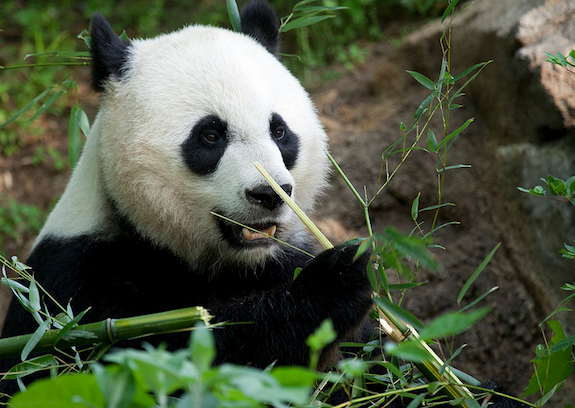Results: Baby Panda Died from Lung and Liver Damage
Official results from the Zoo concluded that the week-old baby giant panda died of oxygen deprivation from poorly developed lungs

Mother Mei Xiang’s appetite and hormone levels have largely returned to normal. Photo by Mehgan Murphy, courtesy the National Zoo
On September 23rd, the world said goodbye to the National Zoo’s week-old baby giant panda without knowing its gender, name or cause of death. A necropsy was completed just after the cub was discovered dead, and the Zoo has now released its official report, citing lung and liver damage from oxygen deprivation as the cause of death for the young female.
The report concluded, “Her lungs were poorly developed and likely caused her to have insufficient oxygen, which would be consistent with the changes in the liver.” Mortality rates for giant pandas in captivity in their first year are bleak for both male and female cubs: 26 and 20 percent respectively.
Officials again confirmed that there were no external or internal signs of trauma. In fact, it wasn’t until a caretaker, keeping an eye on the mother and cub from home with the Zoo’s panda cam, heard a distressed sound from mother Mei Xiang that staff was alerted to the crisis. Despite efforts to perform CPR, the cub was unresponsive.
Meanwhile, Mei Xiang has almost returned to her normal behavior and keepers have cleared the bamboo nesting materials from her den.
/https://tf-cmsv2-smithsonianmag-media.s3.amazonaws.com/accounts/headshot/Leah-Binkovitz-240.jpg)
/https://tf-cmsv2-smithsonianmag-media.s3.amazonaws.com/accounts/headshot/Leah-Binkovitz-240.jpg)